An M/G/1 Queue with Repeated Orbit While in Service
Abstract
1. Introduction
- -
- We derive the Laplace–Stieltjes transforms (LSTs) for the following customer sojourn times: (a) V = the service-related sojourn time of a customer in the system calculated from the instant s/he starts service until departure, including time in orbit; and (b) H = the length of time a customer remains in orbit after her/his service has been completed.
- -
- For an arbitrary customer, we obtain the mean number of orbits until departure.
- -
- We provide a comparison study of various performance measures considering different service time distributions, including the family of gamma distributions (spanning the range between the exponential and deterministic distributions), as well as the uniform distribution. The comparison study reveals the following qualitative conclusions:
- (i).
- As customers spend more time in orbit and the service time variance decreases, a higher improvement is achieved in the system’s performance.
- (ii).
- If customers go more often to orbit (i.e., their patience time is shorter), or when they spend longer periods in orbit, their sojourn time inside the system is reduced, implying more efficient time use. However, their mean total time in the system (service plus orbit) is higher.
- (iii).
- The mean total sojourn time in the system (inside and in orbit) is highest when the service time is deterministic, and the lowest values are obtained when the service time is exponential. Conversely, a lower mean sojourn time excluding orbit is achieved when the service time is deterministic, while the highest is when the service time is exponential.
- (iv).
- The service time variance affects the mean number of orbits in opposite directions. In some cases, it is higher under the uniform distribution than under the exponential distribution, while in other cases, the opposite occurs.
2. Related Literature
3. Model Description
4. Formulation and Analysis
- (i).
- The time that customers spend in orbit does not affect the utilization of the server, as expressed in Equation (32).
- (ii).
- If the customer’s patience time is unbounded, or if the orbit time tends to zero, we obtain the PGF of the number of customers in the classical M/G/1 queue, namely,
5. Customer’s Sojourn Times and Number of Orbits
6. Impact of Different Service Time Distributions
- (i).
- The gamma distribution with scale and shape . That is, , with , , , LST , and .
- (ii).
- The exponential distribution, , which is a special extreme case of the gamma distribution with .
- (iii).
- The deterministic distribution obtained from the gamma distribution by letting .
- (iv).
- The uniform distribution, , with , , , LST , and .
6.1. Mean Number of Customers, E[L]
6.2. Customer’s Mean Sojourn Time Excluding Orbit, E[D]
6.3. Mean Total Sojourn Time, E[V]
6.4. Mean Remaining Orbit Time After Service Completion, E[H]
6.5. Mean Number of Orbits, E[O]
6.6. Main Conclusions
- The mean number of customers in the system decreases when the variance of the service time decreases.
- For gamma distributed service times, the mean number of customers decreases with , converging to that for the deterministic distribution.
- As customers spend more time in orbit, decreasing the service time variance yields a higher reduction in the mean number of customers in the system.
- As increases, that is, as customers are less patient and go more often to orbit, the mean total sojourn time increases where the orbit time occupies a higher proportion of the total time.
- Conversely, as increases, that is, as the mean orbit time decreases, the mean total sojourn time decreases. Here, the service time constitutes a higher component.
- Evidently, the faster the rate of service, the shorter the sojourn times (with or without orbit).
- Ignoring the orbit time, a higher service variability (e.g., an exponential service) increases the sojourn time in the system. However, when considering the total sojourn time, it is interesting to observe that the added randomness of the orbit time balances the randomness of the service time. Consequently, a system with a higher service variance (e.g., an exponential service) is more efficient.
- Shorter patient times, shorter orbit times, and longer service times increase the mean number of orbits until departure.
- The service time variance may affect the mean number of orbits in opposite directions. Yet, when the variance becomes very small, its effect diminishes and all values become equal.
7. Summary and Further Research
Supplementary Materials
Author Contributions
Funding
Data Availability Statement
Conflicts of Interest
References
- Templeton, J.G.C.; Falin, G.I. Retrial Queues; Taylor & Francis: Abingdon, UK, 2023; ISBN 1351418661. [Google Scholar]
- Artalejo, J.R.; Gómez-Corral, A. Retrial Queueing Systems: A Computational Approach; Springer: Berlin/Heidelberg, Germany, 2008; ISBN 3540787240. [Google Scholar]
- Gómez-Corral, A.; Phung-Duc, T. Retrial Queues and Related Models. Ann. Oper. Res. 2016, 247, 1–2. [Google Scholar] [CrossRef][Green Version]
- Hanukov, G.; Anily, S.; Yechiali, U. Ticket Queues with Regular and Strategic Customers. Queueing Syst. 2020, 95, 145–171. [Google Scholar] [CrossRef]
- Hanukov, G.; Yechiali, U. Orbit While in Service. Oper. Res. 2024, 24, 18. [Google Scholar] [CrossRef]
- Hanukov, G. A Queueing-Inventory System with a Repeated-Orbit Policy during the Service. Ann. Oper. Res. 2023, 1–33. [Google Scholar] [CrossRef]
- Kosten, L. Stochastic Theory of Service Systems. Oper. Res. Q. 1974, 25, 645. Available online: https://cir.nii.ac.jp/crid/1130000796048542720 (accessed on 1 October 2024).
- Knessl, C.; Matkowsky, B.J.; Schuss, Z.; Tier, C. An Integral Equation Approach to the M/G/2 Queue. Oper. Res. 1990, 38, 506–518. [Google Scholar] [CrossRef]
- Henderson, W. Alternative Approaches to the Analysis of the M/G/1 and G/M/1 Queues. J. Oper. Res. Soc. Jpn. 1972, 15, 92–101. [Google Scholar]
- Klimko, E.M.; Neuts, M.F. The Single Server Queue in Discrete Time-numerical Analysis II. Nav. Res. Logist. Q. 1973, 20, 305–319. [Google Scholar] [CrossRef]
- DO, L.E. The Discrete-Time Single-Server Queue with Time-Inhomogeneous Compound Poisson Input and General Service Time Distribution. J. Appl. Prob. 1978, 15, 601. [Google Scholar]
- Barron, Y. A Replenishment Inventory Model with a Stock-Dependent Demand and Age–Stock-Dependent Cost Functions in a Random Environment. Asia-Pac. J. Oper. Res. 2022, 39, 2150035. [Google Scholar] [CrossRef]
- Cohen, J.W. The Single Server Queue; Elsevier: Amsterdam, The Netherlands, 1982. [Google Scholar]
- Kerner, Y. The Conditional Distribution of the Residual Service Time in the M n/G/1 Queue. Stoch. Model. 2008, 24, 364–375. [Google Scholar] [CrossRef]
- Kulkarni, V.G.; Choi, B.D. Retrial Queues with Server Subject to Breakdowns and Repairs. Queueing Syst. 1990, 7, 191–208. [Google Scholar] [CrossRef]
- Kerner, Y.; Shmuel-Bittner, O. Strategic Behavior and Optimization in a Hybrid M/M/1 Queue with Retrials. Queueing Syst. 2020, 96, 285–302. [Google Scholar] [CrossRef]
- Fiems, D. Retrial Queues with Constant Retrial Times. Queueing Syst. 2023, 103, 347–365. [Google Scholar] [CrossRef]
- Dimitriou, I. A Single Server Retrial Queue with Event-Dependent Arrival Rates. Ann. Oper. Res. 2023, 331, 1053–1088. [Google Scholar] [CrossRef]
- Jeganathan, K.; Harikrishnan, T.; Lakshmanan, K.; Melikov, A.; Sztrik, J. Modeling of Junior Servers Approaching a Senior Server in the Retrial Queuing-Inventory System. Mathematics 2023, 11, 4581. [Google Scholar] [CrossRef]
- Hu, K.; Allon, G.; Bassamboo, A. Understanding Customer Retrials in Call Centers: Preferences for Service Quality and Service Speed. Manuf. Serv. Oper. Manag. 2022, 24, 1002–1020. [Google Scholar] [CrossRef]
- Zhang, Y.; Wang, J. Managing Retrial Queueing Systems with Boundedly Rational Customers. J. Oper. Res. Soc. 2023, 74, 748–761. [Google Scholar] [CrossRef]
- Xu, J.; Liu, L.; Wu, K. Analysis of a Retrial Queueing System with Priority Service and Modified Multiple Vacations. Commun. Stat.-Theory Methods 2022, 52, 6207–6231. [Google Scholar] [CrossRef]
- Lee, S.W.; Kim, B.; Kim, J. Analysis of the Waiting Time Distribution in M/G/1 Retrial Queues with Two Way Communication. Ann. Oper. Res. 2022, 310, 505–518. [Google Scholar] [CrossRef]
- Avrachenkov, K.; Yechiali, U. Retrial Networks with Finite Buffers and Their Application to Internet Data Traffic. Probab. Eng. Inf. Sci. 2008, 22, 519–536. [Google Scholar] [CrossRef]
- Yechiali, U. Queues with System Disasters and Impatient Customers When System Is Down. Queueing Syst. 2007, 56, 195–202. [Google Scholar] [CrossRef]
- Liu, H.-L.; Li, Q.-L. Matched Queues with Flexible and Impatient Customers. Methodol. Comput. Appl. Probab. 2023, 25, 4. [Google Scholar] [CrossRef]
- Aalto, S. Whittle Index Approach to Multiserver Scheduling with Impatient Customers and DHR Service Times. Queueing Syst. 2024, 107, 1–30. [Google Scholar] [CrossRef]
- Manitz, M.; Piehl, M.-P. A Fast Staffing Algorithm for Multistage Call Centers with Impatient Customers and Time-Dependent Overflow. Cent. Eur. J. Oper. Res. 2024, 32, 763–791. [Google Scholar] [CrossRef]
- Lv, S.; Li, F.; Li, J. The M/M/c Retrial Queueing System with Impatient Customers and Server Working Breakdown. IAENG Int. J. Appl. Math. 2024, 54, 1499. [Google Scholar]
- Altman, E.; Yechiali, U. Analysis of Customers’ Impatience in Queues with Server Vacations. Queueing Syst. 2006, 52, 261–279. [Google Scholar] [CrossRef]
- Altman, E.; Yechiali, U. Infinite-Server Queues with System’s Additional Tasks and Impatient Customers. Probab. Eng. Inf. Sci. 2008, 22, 477–493. [Google Scholar] [CrossRef]
- Inoue, Y.; Ravner, L.; Mandjes, M. Estimating Customer Impatience in a Service System with Unobserved Balking. Stoch. Syst. 2023, 13, 181–210. [Google Scholar] [CrossRef]
- Bassamboo, A.; Randhawa, R.; Wu, C. Optimally Scheduling Heterogeneous Impatient Customers. Manuf. Serv. Oper. Manag. 2023, 25, 1066–1080. [Google Scholar] [CrossRef]
- Sharma, S.; Kumar, R.; Soodan, B.S.; Singh, P. Queuing Models with Customers’ Impatience: A Survey. Int. J. Math. Oper. Res. 2023, 26, 523–547. [Google Scholar] [CrossRef]
- Levy, Y.; Yechiali, U. Utilization of Idle Time in an M/G/1 Queueing System. Manag. Sci. 1975, 22, 202–211. [Google Scholar] [CrossRef]
- Levy, Y.; Yechiali, U. An M/M/s Queue with Servers’ Vacations. INFOR Inf. Syst. Oper. Res. 1976, 14, 153–163. [Google Scholar] [CrossRef]
- Takagi, H. Queueing Analysis: A Foundation of Performance Evaluation. In Vacation and Priority Systems; Elsevier: Amsterdam, The Netherlands, 1991; Volume 1. [Google Scholar]
- Tian, N.; Zhang, Z.G. Vacation Queueing Models: Theory and Applications; Springer Science & Business Media: Berlin/Heidelberg, Germany, 2006; Volume 93, ISBN 0387337237. [Google Scholar]
- Barron, Y. A Threshold Policy in a Markov-Modulated Production System with Server Vacation: The Case of Continuous and Batch Supplies. Adv. Appl. Probab. 2018, 50, 1246–1274. [Google Scholar] [CrossRef]
- Niranjan, S.P.; Devi Latha, S.; Mahdal, M.; Karthik, K. Multiple Control Policy in Unreliable Two-Phase Bulk Queueing System with Active Bernoulli Feedback and Vacation. Mathematics 2023, 12, 75. [Google Scholar] [CrossRef]
- Liu, T.-H.; Chiou, K.-C.; Chen, C.-M.; Chang, F.-M. Multiserver Retrial Queue with Two-Way Communication and Synchronous Working Vacation. Mathematics 2024, 12, 1163. [Google Scholar] [CrossRef]
- Khan, I.E.; Paramasivam, R. Reduction in Waiting Time in an M/M/1/N Encouraged Arrival Queue with Feedback, Balking and Maintaining of Reneged Customers. Symmetry 2022, 14, 1743. [Google Scholar] [CrossRef]
- Melikov, A.; Aliyeva, S.; Sztrik, J. Analysis of Instantaneous Feedback Queue with Heterogeneous Servers. Mathematics 2020, 8, 2186. [Google Scholar] [CrossRef]
- Melikov, A.; Chakravarthy, S.R.; Aliyeva, S. A Retrial Queueing Model with Feedback. Queueing Models Serv. Manag. 2023, 6, 63–95. [Google Scholar]
- Mytalas, G.C.; Zazanis, M.A. Performance Analysis for Bernoulli Feedback Queues Subject to Disasters: A System with Batch Poisson Arrivals under a Multiple Vacation Policy. Qual. Technol. Quant. Manag. 2023, 20, 113–146. [Google Scholar] [CrossRef]
- Ross, S.M. Stochastic Processes; Wiley: New York, NY, USA, 1996; Volume 2. [Google Scholar]
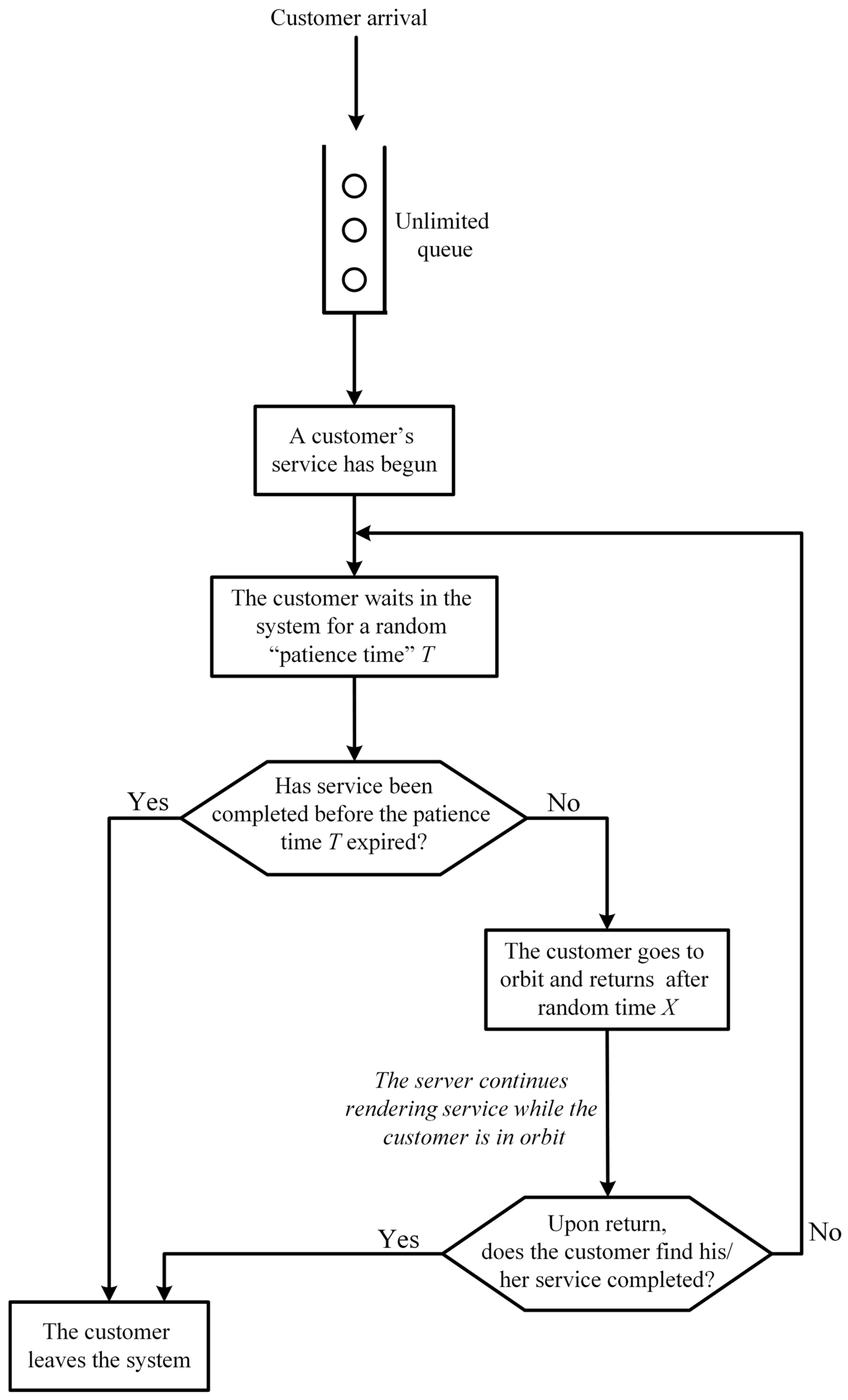
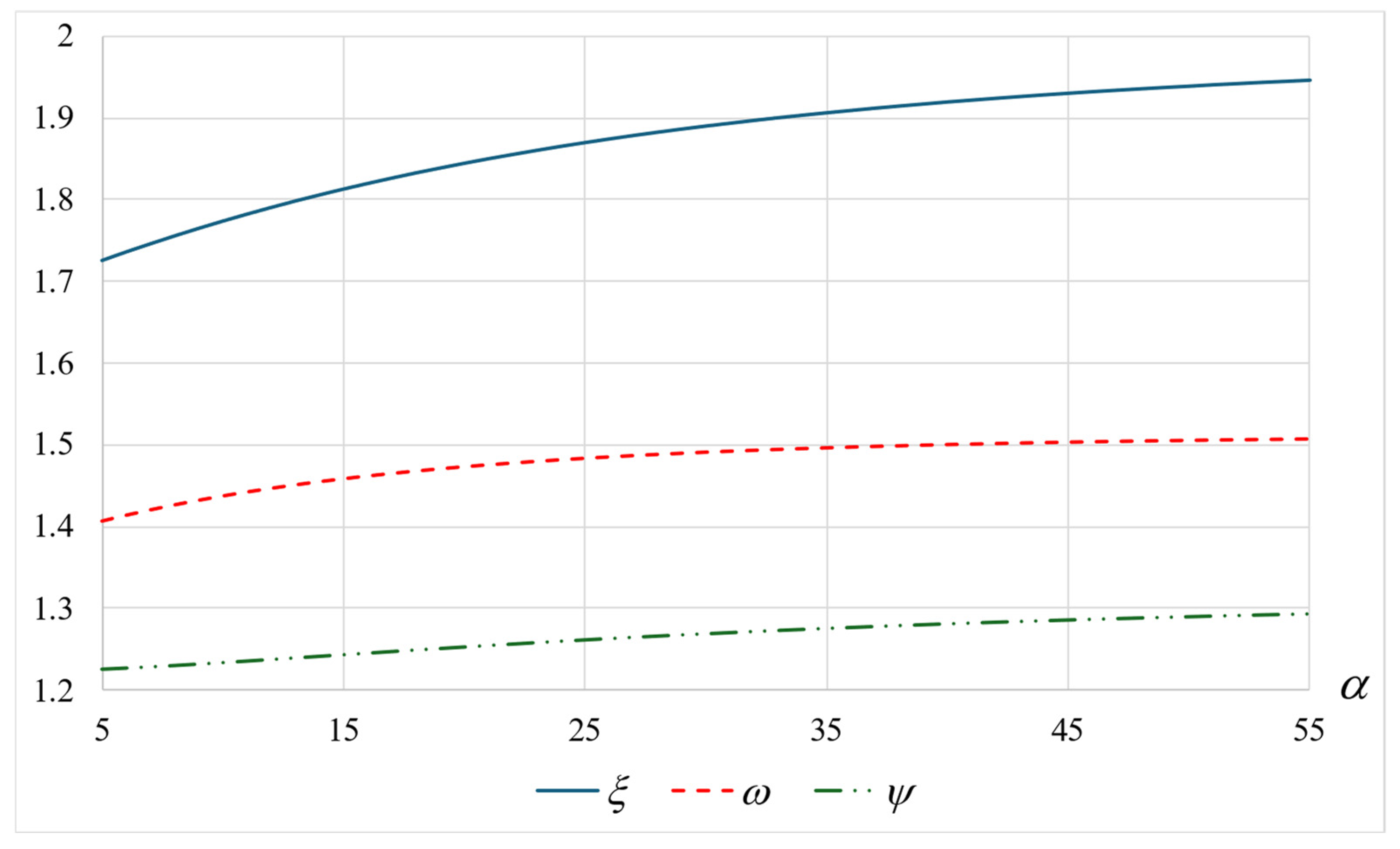
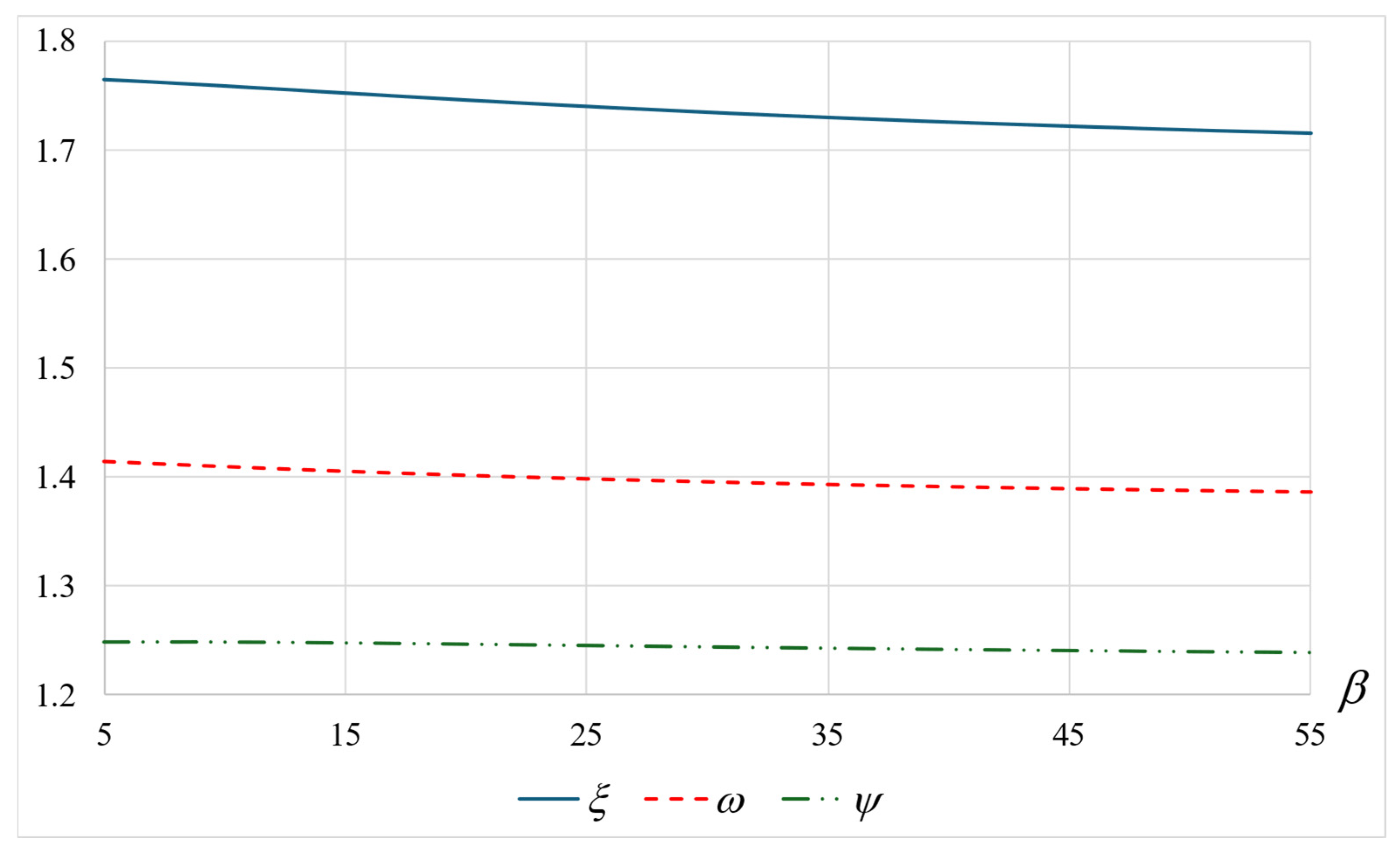
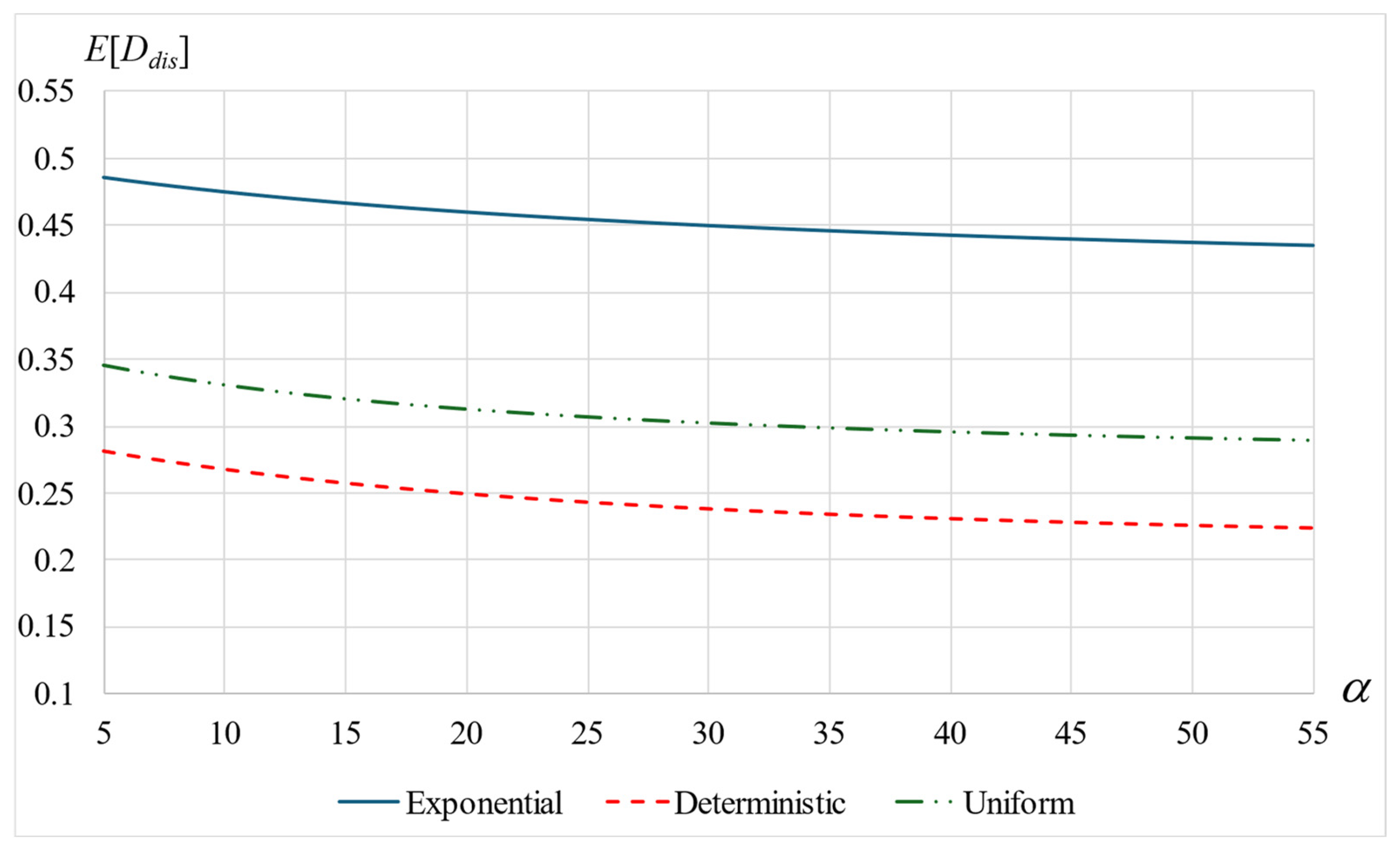
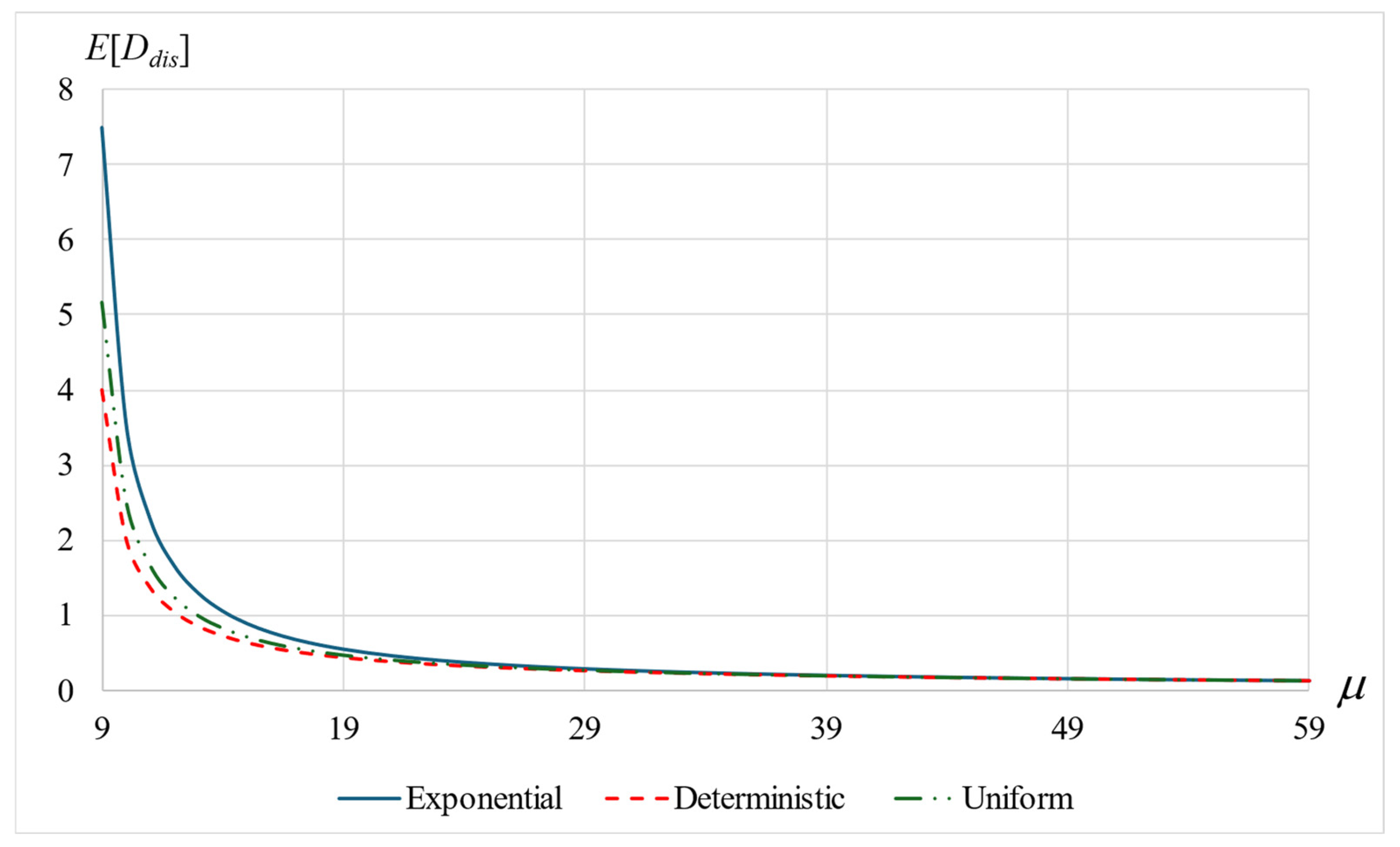
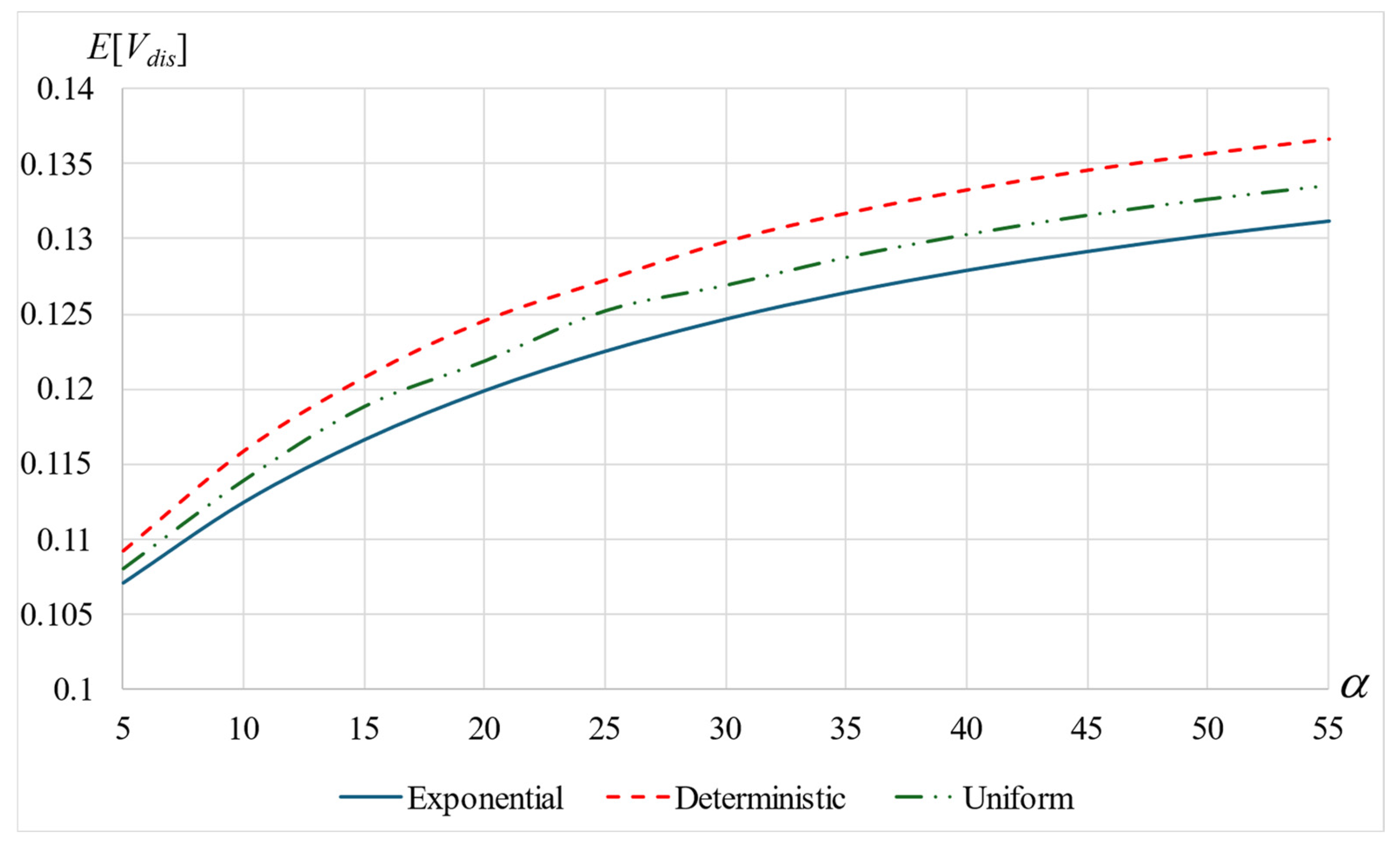
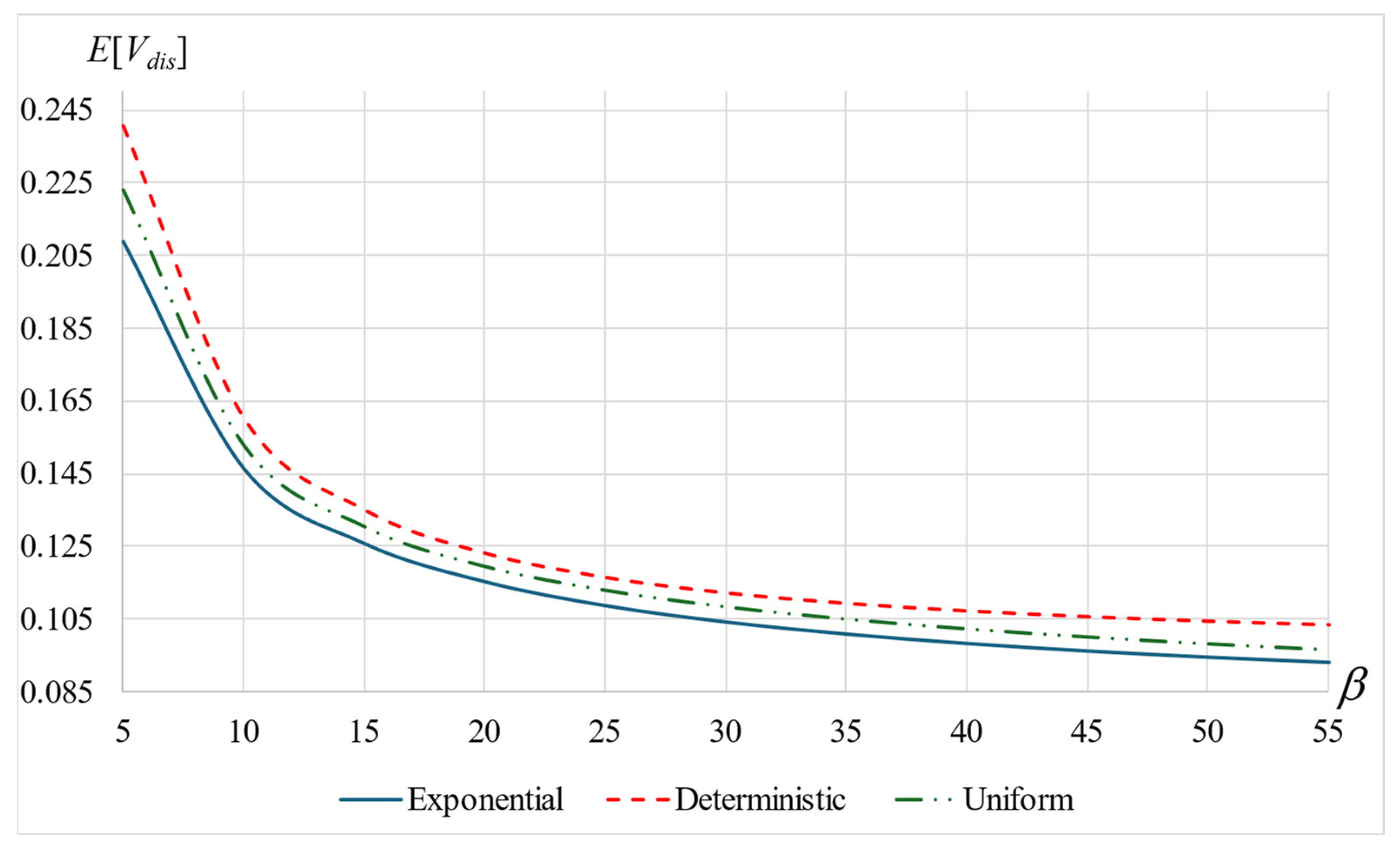

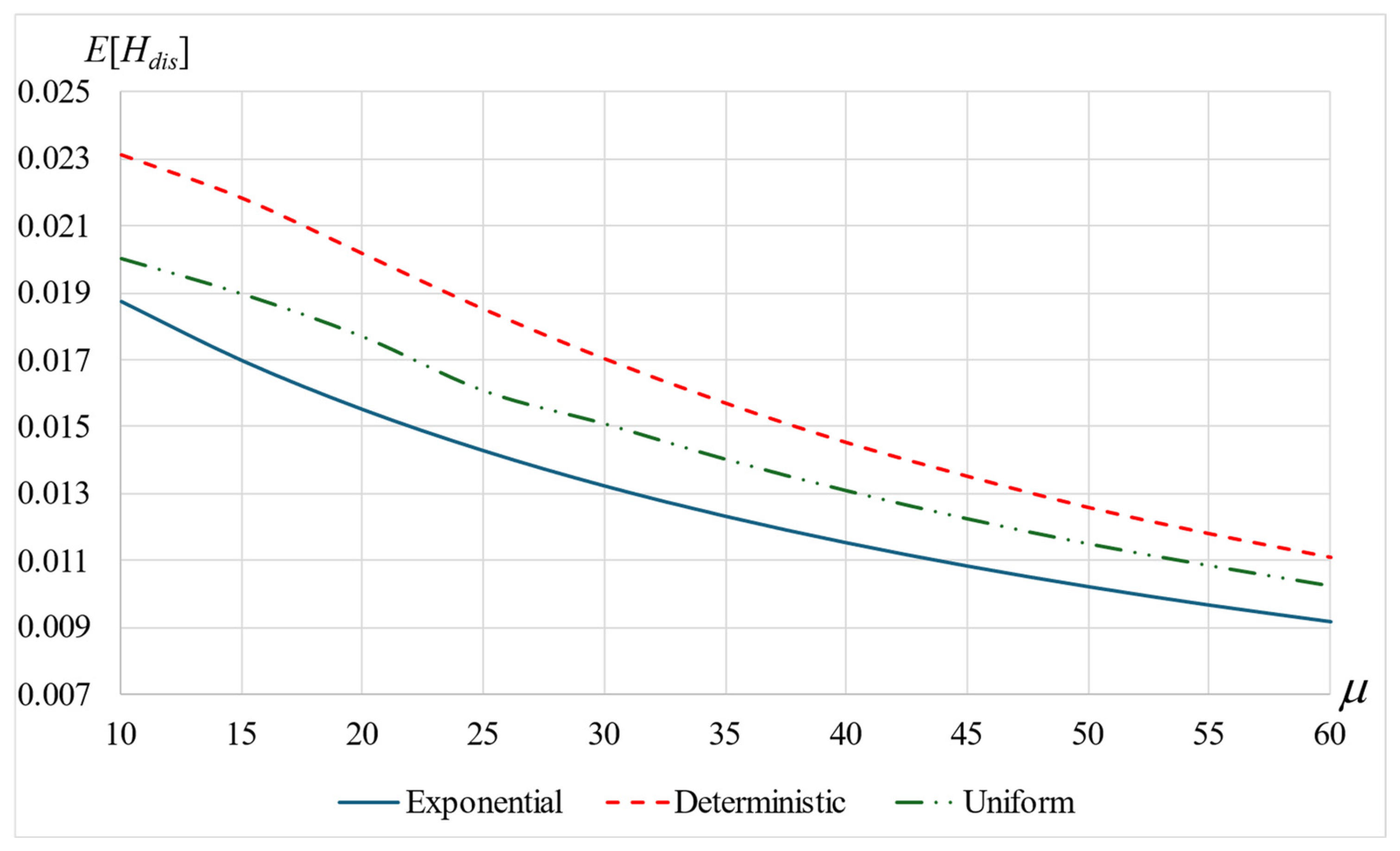
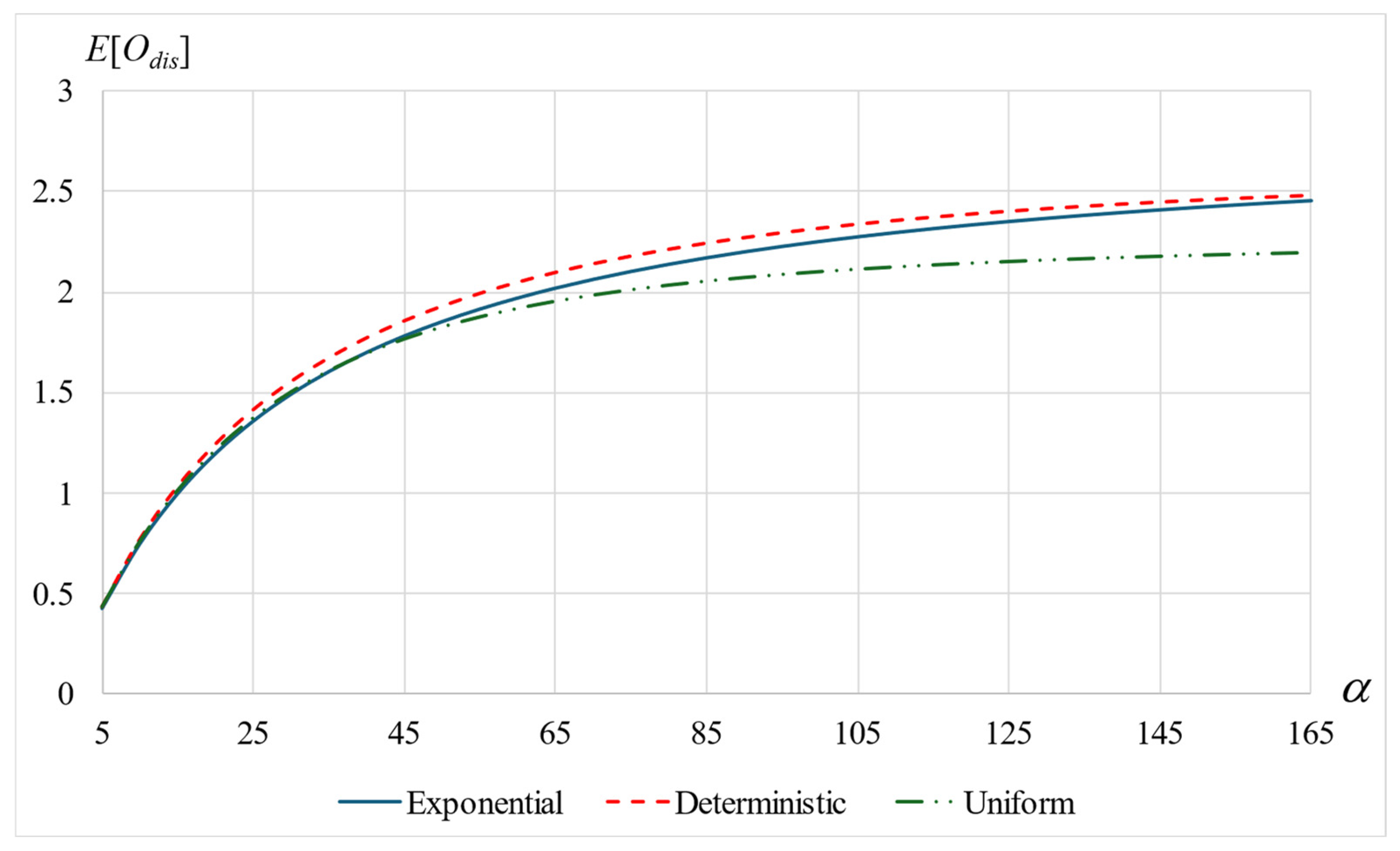
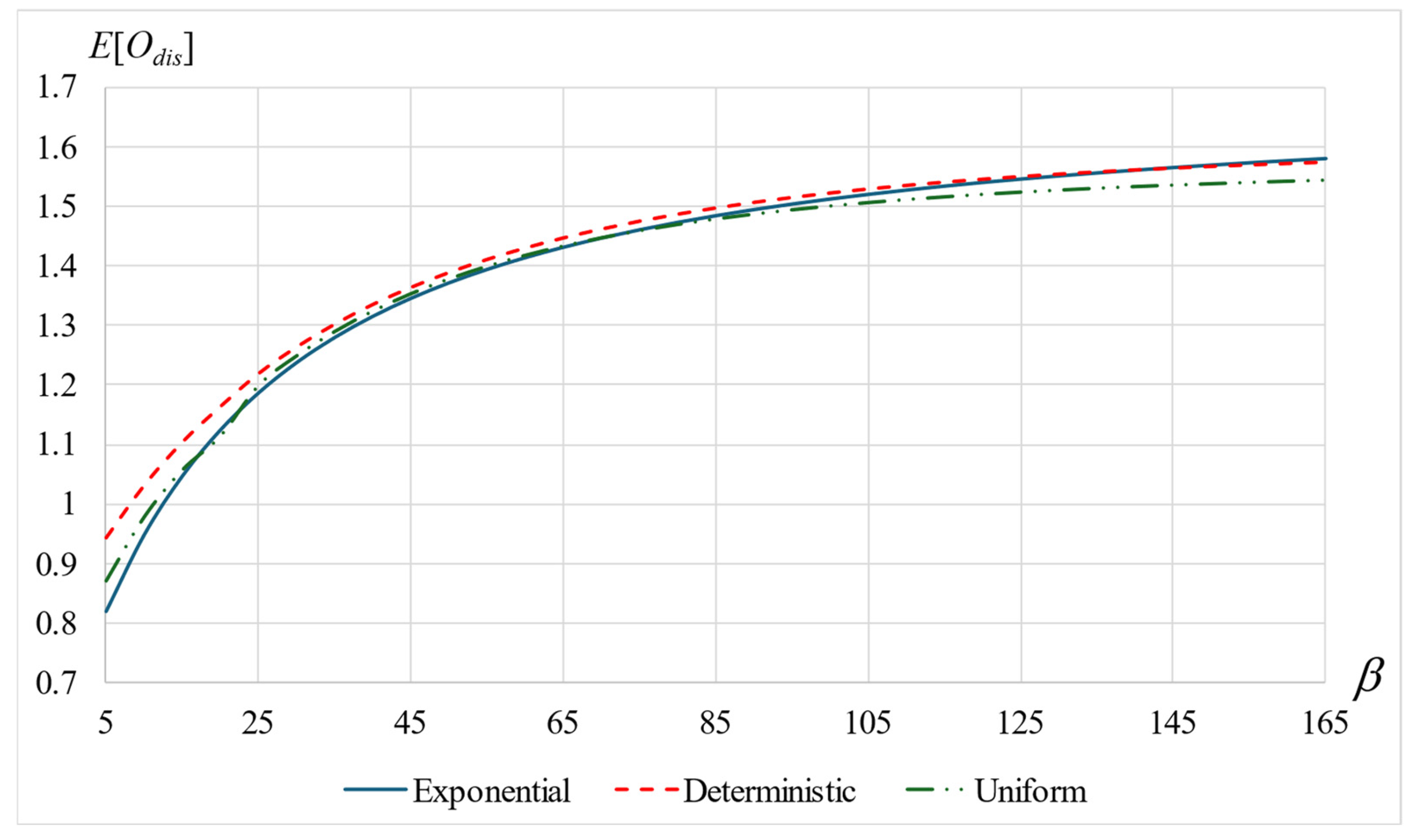
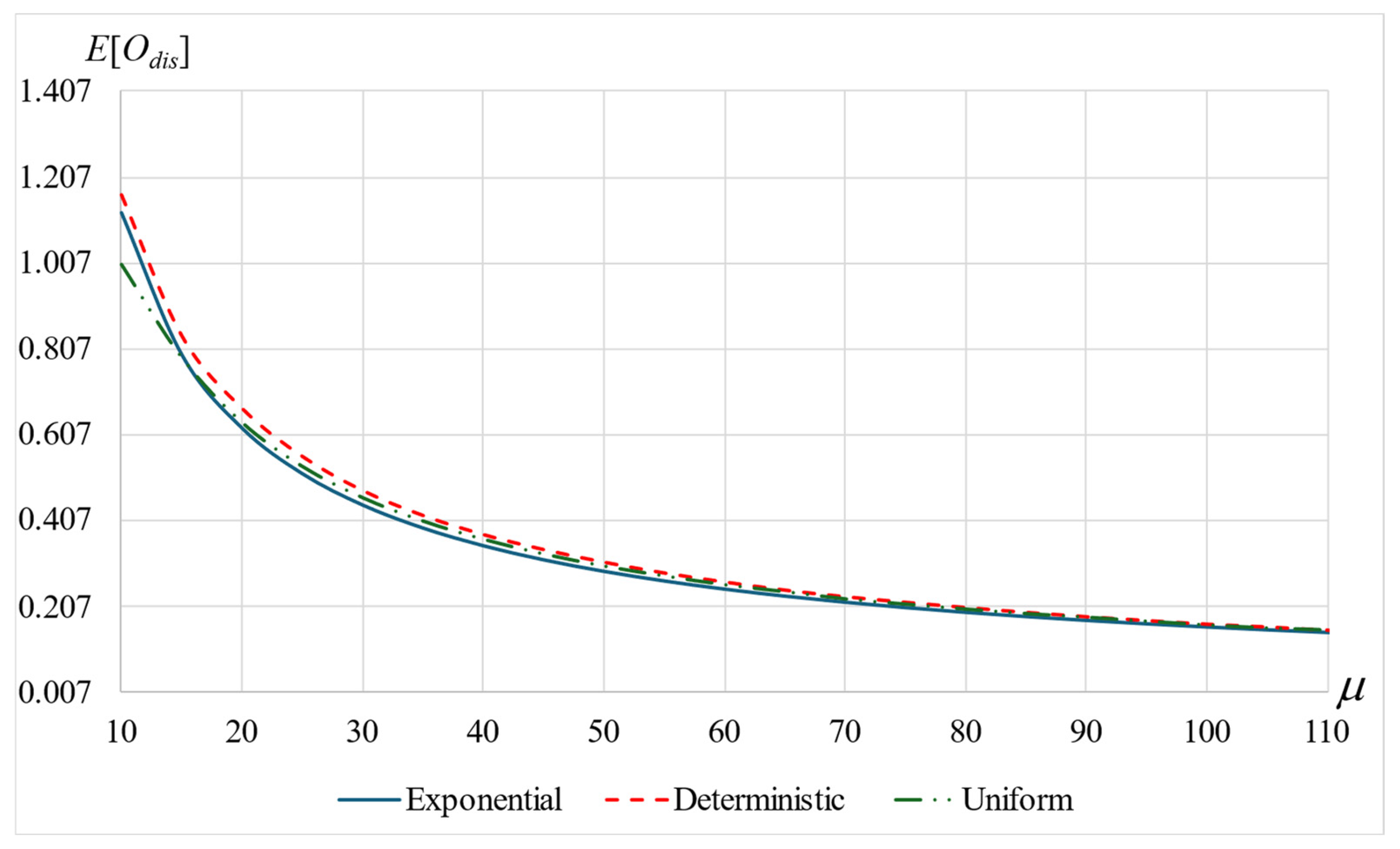
Disclaimer/Publisher’s Note: The statements, opinions and data contained in all publications are solely those of the individual author(s) and contributor(s) and not of MDPI and/or the editor(s). MDPI and/or the editor(s) disclaim responsibility for any injury to people or property resulting from any ideas, methods, instructions or products referred to in the content. |
© 2024 by the authors. Licensee MDPI, Basel, Switzerland. This article is an open access article distributed under the terms and conditions of the Creative Commons Attribution (CC BY) license (https://creativecommons.org/licenses/by/4.0/).
Share and Cite
Hanukov, G.; Barron, Y.; Yechiali, U. An M/G/1 Queue with Repeated Orbit While in Service. Mathematics 2024, 12, 3722. https://doi.org/10.3390/math12233722
Hanukov G, Barron Y, Yechiali U. An M/G/1 Queue with Repeated Orbit While in Service. Mathematics. 2024; 12(23):3722. https://doi.org/10.3390/math12233722
Chicago/Turabian StyleHanukov, Gabi, Yonit Barron, and Uri Yechiali. 2024. "An M/G/1 Queue with Repeated Orbit While in Service" Mathematics 12, no. 23: 3722. https://doi.org/10.3390/math12233722
APA StyleHanukov, G., Barron, Y., & Yechiali, U. (2024). An M/G/1 Queue with Repeated Orbit While in Service. Mathematics, 12(23), 3722. https://doi.org/10.3390/math12233722





